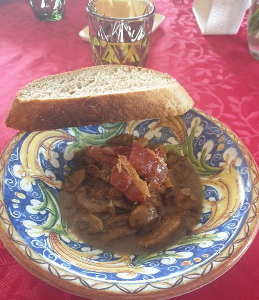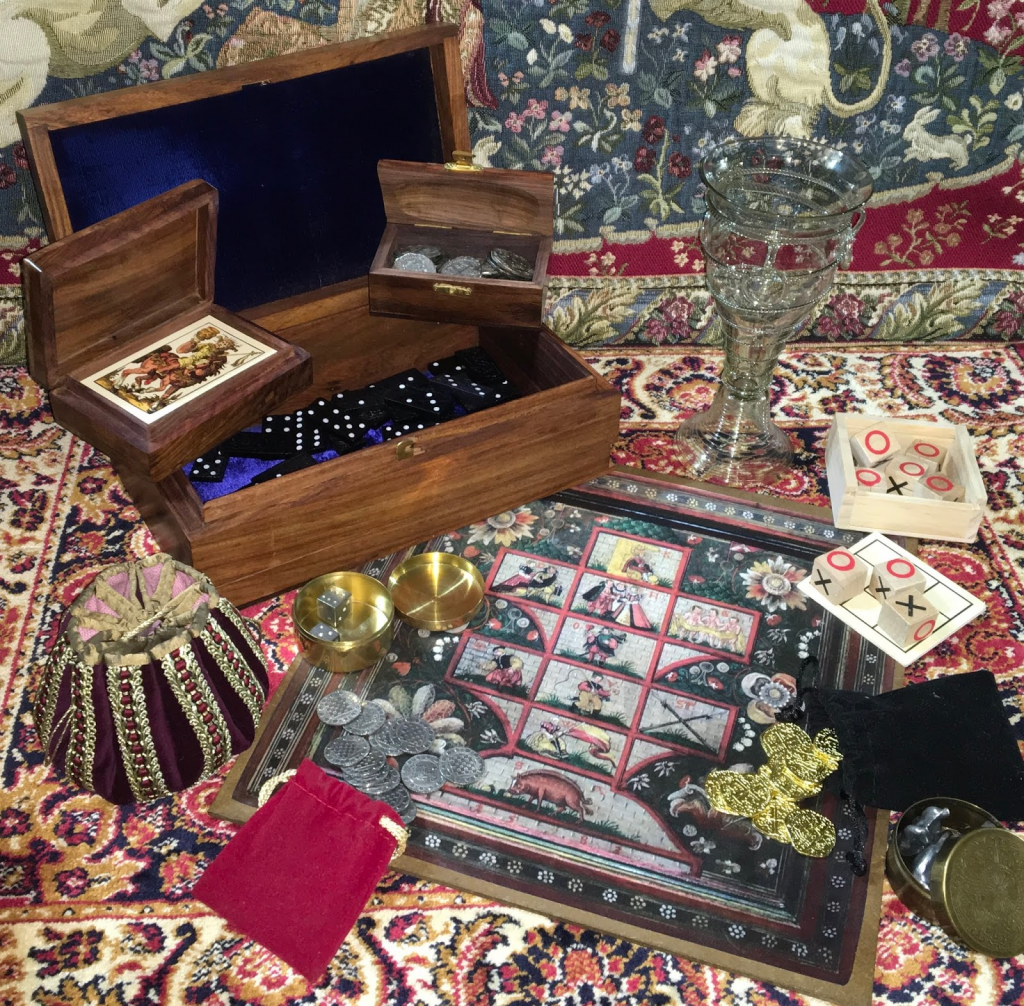Category: To refine gold to paint the lily To throw a perfume on the violet. At your toilette: hairstyling, make up, beauty products, skincare, ointments, unguents, perfumes, etc
Purpose
Where choosing jewellery is the final touch to completing an ensemble, selecting the hairstyle is often the first decision I make after choosing my wardrobe for an event. I like to take my time and use good tools to ensure a secure, period-plausible hairstyle. It gives me a moment to get used to the clothing, and let things settle before adding the accessories and jewellery.
As I am also partial to experimenting with different tools, jewels, headwear and hairstyles, this is a long-term and ongoing pet project. New hairsticks, combs, pomades, needles, and threads are regularly acquired and tested (sometimes to destruction) to recreate something I have seen in a period source.
Tools
- Combs of varying coarseness (for detangling and cleaning hair as well as smoothing hairstyles)
- Brush (for smoothing hairstyles)
- Needles & threads & snips (for tying off plaits, sewing hair into place, and getting it loose again)
- Pomade (for holding ends together, and flyaways in place)
- Mirror
- Gravoir (for cleanly parting hair and holding sections out of the way)
- Hairsticks (for holding and enhancing hairdos)
- Ribbons and jewels (for enhancing hairstyles)
- Lambs wool (for adding volume without much additional mass)
- Bump clips (for adding volume, in place of wool, or hair rats)
The above is a selection of my most commonly used hair related items. As the box has limited space, the kit is contains is normally carefully curated to reflect the wardrobe packed for an event such as Canterbury Faire.
Methods
Please watch this YouTube video from the Known World Colegio de Iberia to see how the various tools above are used, and my new favourite Spanish hairstyle is constructed: https://youtu.be/qlCoVQYTZQU

Verdict
Using the tools is great for getting into the mindset before an event, or for preparing for the day while camping. (However, I really must sharpen snips for getting out of hairstyles more expediently.)
This hairstyle is secure and comfortable. As the majority of the mass is centered over my neck, my head is not continuously pulled backwards, resulting in less fatigue and fewer headaches that my usual large, coiled plait.
Additional Resources
- Hous Amberherthe’s Hairdressing Pinterest board: https://www.pinterest.nz/amberherthe/hair-pre-1600/
- Hair archaeologist Janet Stephens: https://www.youtube.com/channel/UCboS0faGVeMi3n5_2LsVazw
- Silvouplaits historical hairstyles: https://youtube.com/playlist?list=PLHZvUpJ8tQdsahhA7hOmbYGoM57-GvEmV





















